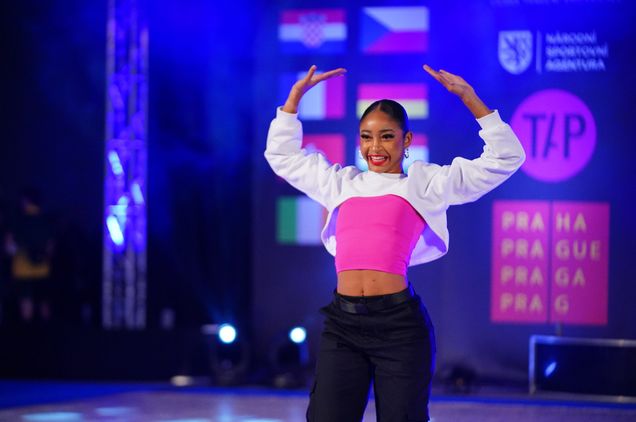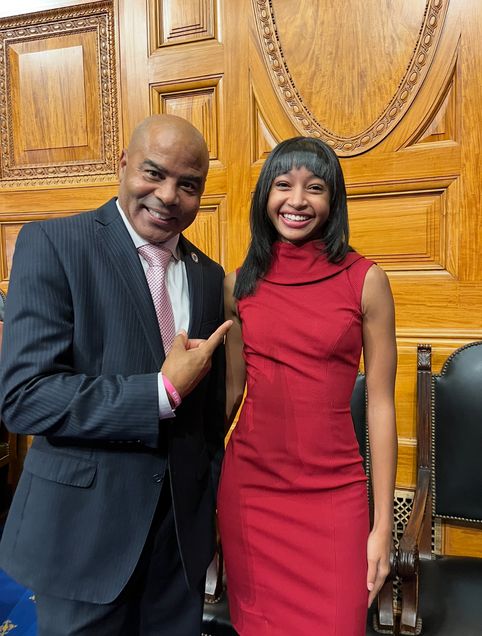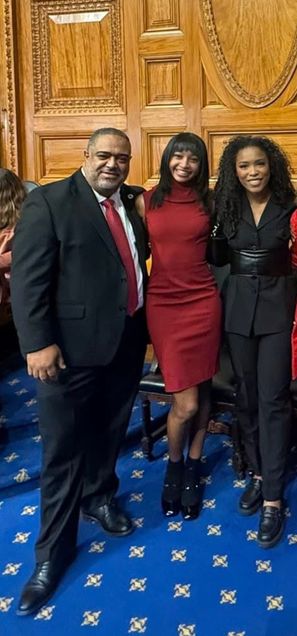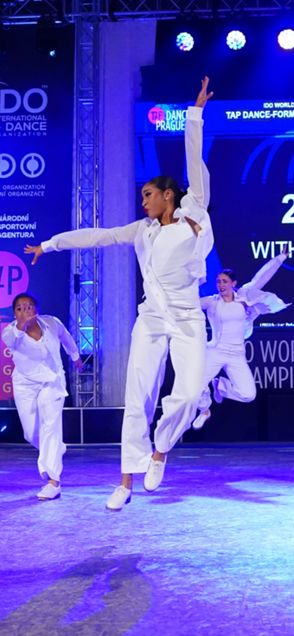News
Research Highlight: Armaan Mehta ’26 Presents at Materials Research Society Conference
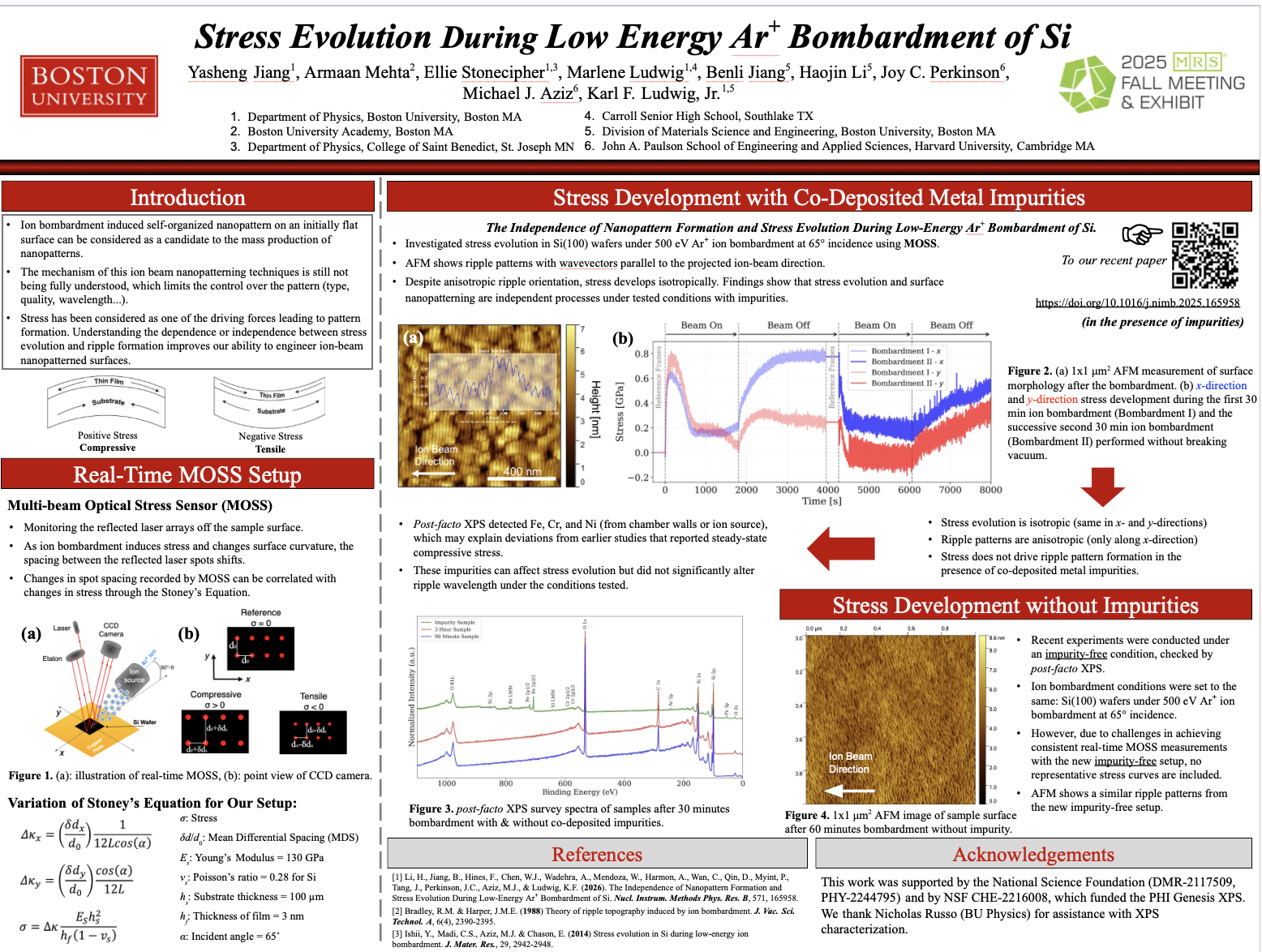 Earlier this month, BUA senior Armaan Mehta '26 presented a poster at the Materials Research Society's fall meeting and exhibit at the Hynes Convention Center in Boston. Armaan's poster, entitled "Stress Evolution During Low Energy Ar+ Bombardment of Si," focused on stress evolution during low energy Argon bombardment of Silicon.
Earlier this month, BUA senior Armaan Mehta '26 presented a poster at the Materials Research Society's fall meeting and exhibit at the Hynes Convention Center in Boston. Armaan's poster, entitled "Stress Evolution During Low Energy Ar+ Bombardment of Si," focused on stress evolution during low energy Argon bombardment of Silicon.
Armaan explains: "Stress evolution is seen as a possible cause of nano-ripples, a feature seen when a Silicon sample is bombarded with Argon. To determine whether stress is the cause of the nano-ripples, we used a real time MOSS system (multi-beam optical stress sensor) and then used an Atomic Force Microscope to inspect the sample. So far, our research suggests that the nano-ripples are independent of stress as the ripples are anisotropic (only in the x direction) whereas the stress is isotropic (in both x and y directions)."
Armaan "became interested in this project because the nanopatterns that are formed are a very recent phenomenon and understanding how stress relates to these patterns could have major implications. And of course, how can bombarding something in a vacuum chamber not be fun?!"
He co-presented his poster with Yasheng Jiang, a graduate student in physics at BU, and received research support from Professor Karl Ludwig in Boston University's College of Engineering and Benli Jiang, a PhD candidate in physics at BU.

Alumna Sophia Tang ’25 in the International Journal of High School Research
 Alumna Sophia Tang '25 published a peer-reviewed article titled “Specific Genetic Factors in PTSD and Comorbidities” in the October 2025 issue of the International Journal of High School Research. Sophia's research identifies several genes and genetic pathways linked to PTSD and related disorders and suggests the possibility of customized pharmacological treatments based on these findings.
Alumna Sophia Tang '25 published a peer-reviewed article titled “Specific Genetic Factors in PTSD and Comorbidities” in the October 2025 issue of the International Journal of High School Research. Sophia's research identifies several genes and genetic pathways linked to PTSD and related disorders and suggests the possibility of customized pharmacological treatments based on these findings.
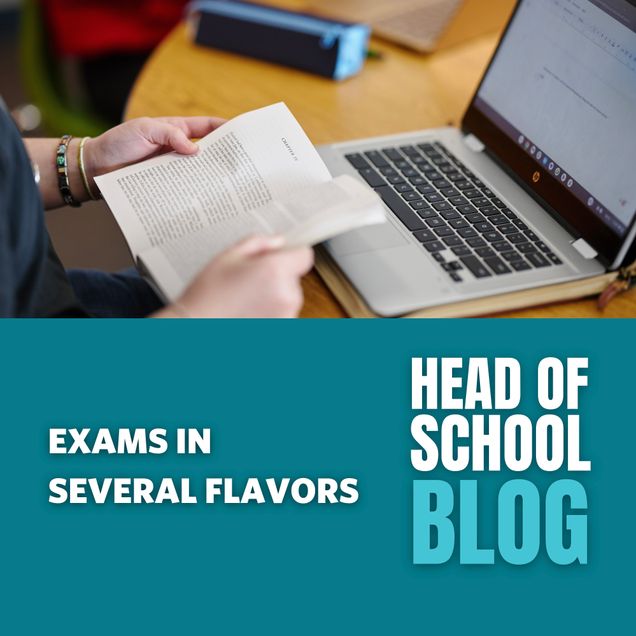
Exams in Several Flavors
Today is the last day of BUA classes. It has been a very good semester, and students’ attention has understandably turned to preparation for next week’s exams. We believe that exams play an important role. They provide students the chance to practice synthesizing months of material and to demonstrate long-term retention of key ideas. Exams are also helpful data points for teachers on how students are learning and how teachers might adjust for the coming semester and future years.
Exams may conjure a singular image of students in long rows for multi-hour, high-stakes tests. The reality is more diverse. Our teachers have created a number of different ways for students to show what they know. There is certainly a place for sit-down, written exams; classics and most of our math classes will offer those. English and history teachers have adopted in-person, one-on-one interviews to supplement the periodic essays and other assessments. Students in chemistry and geometry will have individual oral exams with their teachers as well, while those in biology will give a poster presentation on organelles they have designed. I’m grateful for our faculty’s thoughtfulness and creativity, and wish all of our students good luck next week!
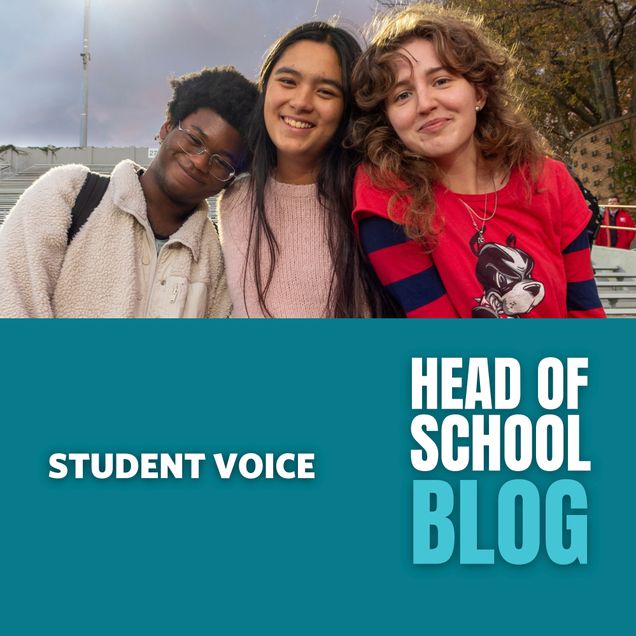
Student Voice
In place of our usual all-school meeting this week, leaders from our Student Council organized community-wide town hall meetings. StuCo representatives led sessions of about 25 students each to hear about their experiences and solicit ideas for how we can further strengthen the BUA community; we’ll review those ideas together later this winter and report back at a school meeting. Another round of town halls is in the works for the spring, and I hope this becomes a new school tradition.
This year, we are also running several small ad hoc working groups, where teachers, staff, and students collaborate on important school policy questions – one focused on our daily schedule and another on our learning-management system. Those groups make recommendations to the full faculty and staff and have a real impact on the life of the school.
Schools are better when students – the experts in what the school experience is really like – have channels to speak up and feel empowered to play a role in shaping the community. That’s particularly true here, where we have an exceptionally thoughtful, dedicated, creative, and talented cadre of young people. I’m proud to work with them side by side.
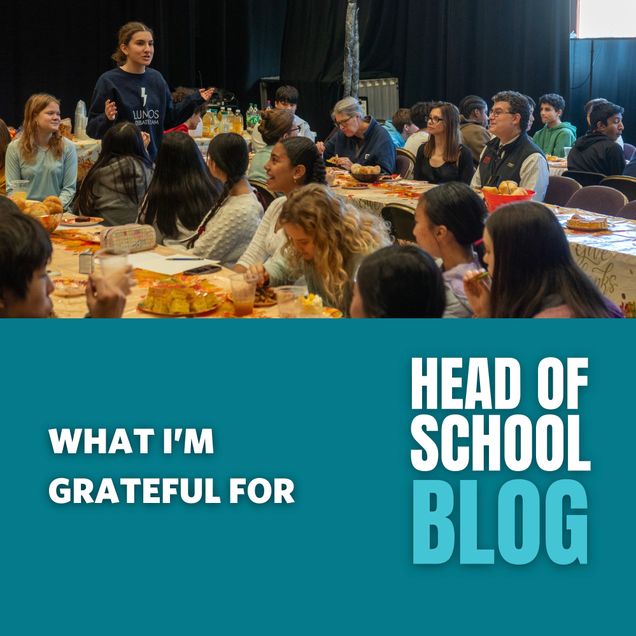
What I’m Grateful For
With Thanksgiving days away, we turn our attention to gratitude. Brimming donation boxes from the 9th-grade food drive adorn the lobby. Tuesday’s all-school meeting will feature short talks by a handful of juniors and seniors who will tell the community about something they are grateful for. It is good for the soul to pause, reflect, and share the blessings we enjoy.
I’d like to take a moment here to express my personal gratitude to this community. I often share (brag, really) with colleagues at other schools that our parent community is like no other. Like their children, our parents value learning, challenge, and growth for their own sake, even in a society that tends to focus too narrowly on college lists and grade outcomes. They trust the school and our extraordinary teachers in a way that has become all too rare. Our students, too, are one of a kind. I have yet to visit another school where curiosity and kindness are the expectation and weaved into the cultural fabric like they are here. I have been meeting groups of seniors for lunch recently. They often ask how we select for those traits in admissions, how we perpetuate that culture day to day, and how they, as leaders in the community, can help. They recognize how rare this student culture is, and I love their desire to preserve it for another generation.
Finally, a thank you to my colleagues on the faculty and staff – the heart of this great school. Our teachers bring an unusually deep well of knowledge, fitting guides for a school filled with kids thirsty to know more. The teachers and staff – including those who will sacrifice sleep and time with their families to chaperone Lock-In tonight! – lean into and model the work ethic, high standards, creativity, and kindness we expect from our students. Most of all, they love these young people. That love opens the door to learning and growth – and to lifelong mentoring relationships. I feel so lucky to work with these remarkable colleagues. I hope that you will join me by taking some time during this holiday season to thank a teacher, advisor, coach, or mentor who has made a difference in your life or in your family’s life.
I wish you a wonderful Thanksgiving.

Odyssey: Fall 2025
BUA is proud to share the fall 2025 edition of Odyssey: The Magazine of Boston University Academy. In this issue you will find:
- Expanding the Frame: A History Curriculum for Today by Dr. Jim Davis
- A Problem-Based Math Curriculum, Built from the Ground Up by Mr. Srdjan Divac and Mr. Zane Ranney
- Building Belonging through Celebration by Dr. Monica Alvarez
- A Room of Their Own: Opening of the New Student Commons
- Young Alumni Spotlights
- BUA Impact Report
- Alumni Class Notes
- ...and more!
Look for a hard copy arriving in your mailbox shortly, or read the digital version here!
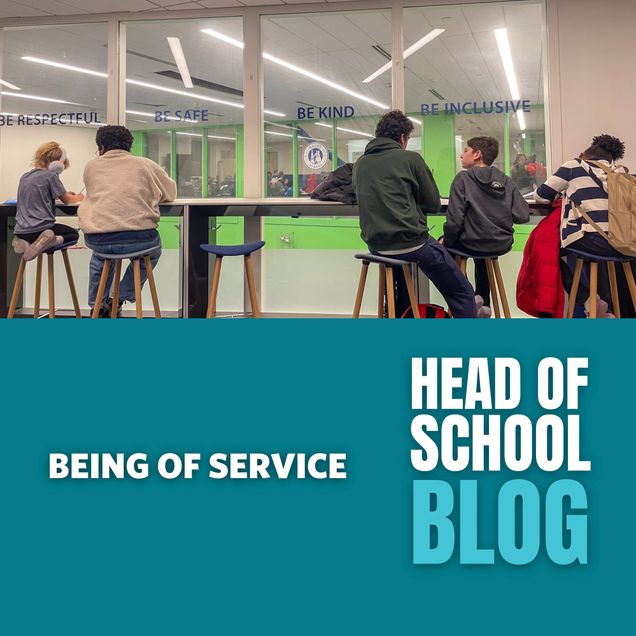
Being of Service
We paused as a community on Tuesday to mark Veterans Day. There are a number of alumni of this school who have devoted their careers to serving our country in branches across the military. Several have returned to BUA over the years to speak to our students and share their journeys. We are grateful for their service and the example they set.
Service takes many forms, but all forms center around a fundamental truth: service to others – our families, friends, community, a stranger, a cause – is where we find purpose in our lives. Decades of psychological research confirms a central thesis of Viktor Frankl’s seminal work, Man’s Search for Meaning, based on his experience as a prisoner in Nazi concentration camps during WWII: humans yearn for and are motivated by the feeling of contributing to something bigger than ourselves and being of service to others. That sense of purpose can be psychologically sustaining, not only in the horrific setting of Frankl’s work, but in more ordinary times as well.
As a school, we have a duty to give students the chance to experience the feeling of motivation and contentment that comes from being of use to others – that something they do matters and perhaps makes somebody else’s life better. Our mission promises that these young people will be challenged to “engage meaningfully in our community and beyond.” There are longstanding traditions of students volunteering in the school and around the Boston area. In the past two years, we have initiated a service-learning pilot where groups of BUA students travel to local middle and elementary schools to volunteer in their afterschool academic and enrichment programs. The interest among BUA students has exceeded our expectations, and we hope to expand the initiative in the coming years. We expect that it will create lifelong habits.
Lyahnnette Morales ’27 Honored at MA State House
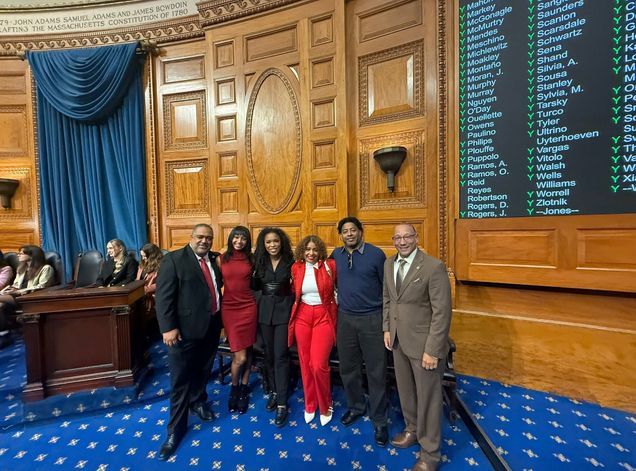 BUA is proud to share that on October 22, 2025, Lyahnnette Morales '27 was honored at the Massachusetts State House for earning the Silver Medal at the 2024 IDO World Tap Dance Championships and for representing her state and country on the world stage once again. The recognition came just a few hours before she boarded a flight to Prague, Czech Republic, where she competed as part of Team USA in the World Tap Dance Adult Formation and Adult Small Group Divisions.
BUA is proud to share that on October 22, 2025, Lyahnnette Morales '27 was honored at the Massachusetts State House for earning the Silver Medal at the 2024 IDO World Tap Dance Championships and for representing her state and country on the world stage once again. The recognition came just a few hours before she boarded a flight to Prague, Czech Republic, where she competed as part of Team USA in the World Tap Dance Adult Formation and Adult Small Group Divisions.
Lyahnnette reflects on her success:
"Being chosen to represent the United States multiple times has been one of the greatest honors of my life not just because of the performances, but because it represents discipline, dedication, and the courage to keep showing up with excellence.
Dancers from more than 30 countries come together in Prague to celebrate our artistry and unity through the universal language of dance. Beyond competition, I continue to give back through my community service initiative “Aim for Success: Tap Into Your Greatness,” which empowers other young people to discover their potential, serve their communities, and lead with integrity.
I’ve learned that success isn’t about trophies or titles but about effort, growth, and purpose. Whether I’m mentoring students, performing on stage, or representing my country, I constantly strive to embody the spirit of excellence in everything I do.
For me, greatness isn’t about perfection but about giving your best, uplifting others, and staying true to your values, no matter the stage you’re standing on."
Congratulations, Lyahnnette, on your impressive accomplishments in dance and for your commitment to serving your community!
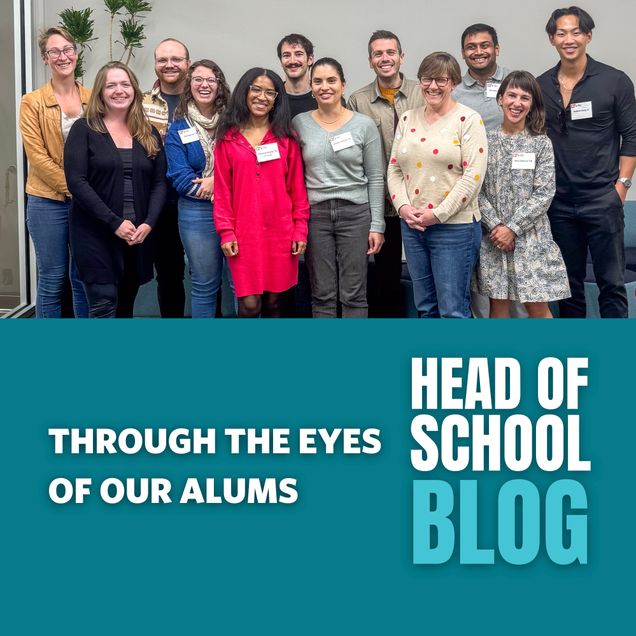
Through the Eyes of Our Alums
BUA’s Alumni Council met recently. The group is made up of 22 graduates from across the decades of the school’s life who volunteer to help build community among fellow graduates, encourage alumni engagement with the school, and offer advice and perspective on today’s BUA. We are grateful for their leadership.
At one point in the meeting, the conversation turned to the ways the school has evolved over time. Voices around the table appreciated the dramatic expansion in financial accessibility. Due to the extraordinary generosity of our donors, financial aid now extends far beyond tuition to defray the costs of textbooks, laptops, school social events, college applications, and other pieces – all critical to being a full member of the community. Council members noted with gratitude other ways in which the school has become more diverse in addition to socioeconomics; BUA today much more closely resembles the world our students are entering than it did years ago. They applauded the investments the school has made in supporting each young person’s socio-emotional life beyond the classroom – the presence of the school psychologist, learning specialist, director of student support, and other structural supports are all relatively new in the life of the school.
Finally, there was a great deal of pride in the fact that a school that was, just decades ago, an experiment with little name recognition is now emerging as the school of choice for exceptionally kind and curious students in the Boston area. BUA is Boston’s best kept secret no longer, and our alums take a lot of pride in the evolution of the school they helped – and continue to help – build.
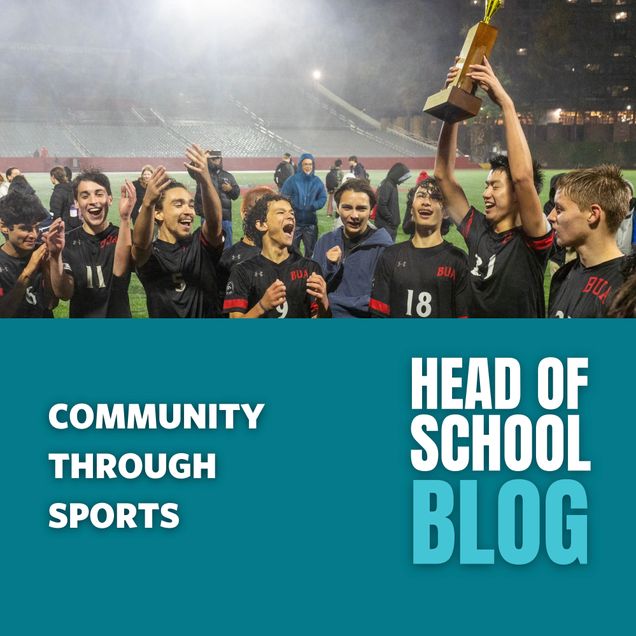
Community through Sports
Our soccer and cross country teams are wrapping up strong seasons this week. Congratulations to all of our student athletes and coaches. Special kudos to our boys varsity soccer team for bringing home the league championship in a great game yesterday evening at Nickerson Field. It was, as they say, a dark and stormy night. Goal kicks traveled either 10 or 50 yards depending on the direction of the wind. Routine shots became dangerous for goalkeepers as the ball skidded over the soaked turf. The boys kept their focus and pulled off a great win.
I was struck by the number of fans who showed up in the monsoon. Parents arrived in the stands with umbrellas, long coats, and hot cider. Students came too – finding spaces on the sidelines and under eaves of a nearby building. It was a festive atmosphere, despite the weather. This was just a week after Fall Fest – BUA’s homecoming celebration – where students, teachers, parents, and alums came out in large numbers to cheer on our girls and boys soccer teams under the lights at the stadium. The sidelines were crowded with students holding signs cheering on their classmates. And there was no rain.
Sports do a lot of good things for individuals. They help young people build lifelong habits of physical activity; give students a rare chance to fail and learn from that experience; allow them to feel what it’s like to be on a team and rely on one another; and provide a way to see the impact of steady, diligent work toward a goal. For the community, it does something else. It brings us together. And I’m really grateful for that.
Basketball and fencing seasons are just around the corner. See you on the sidelines!
